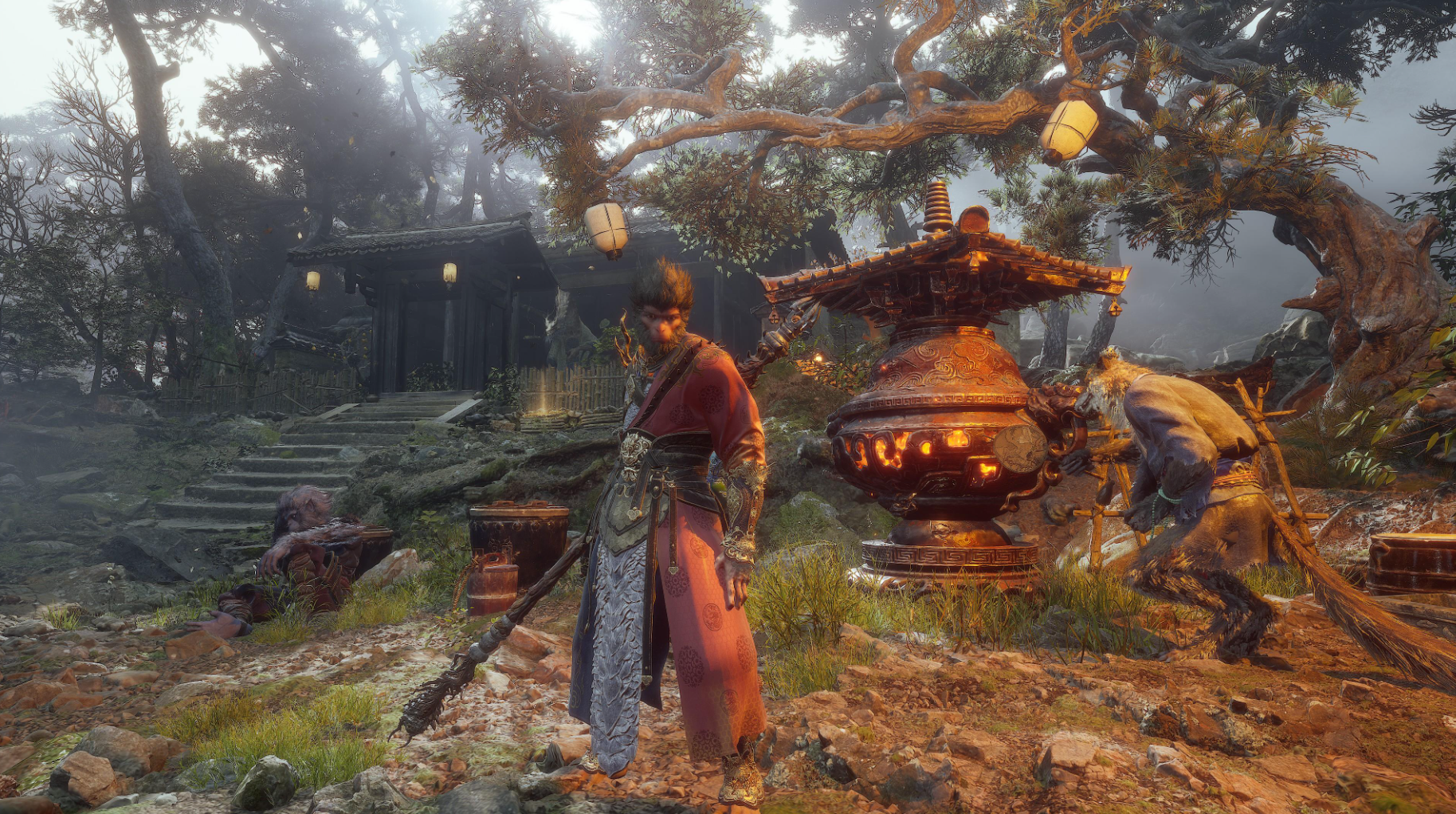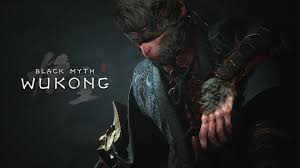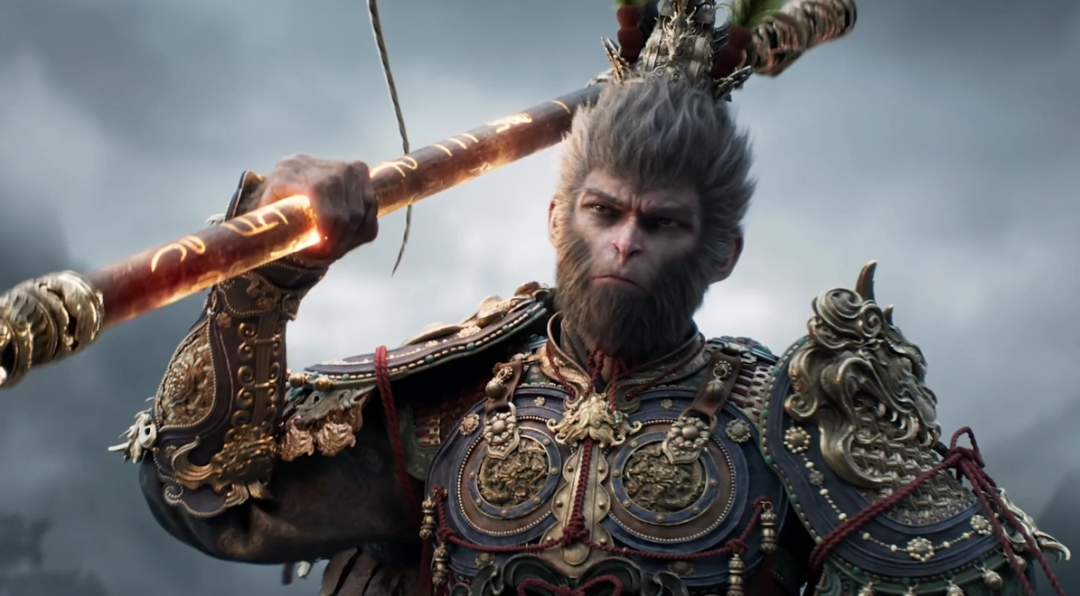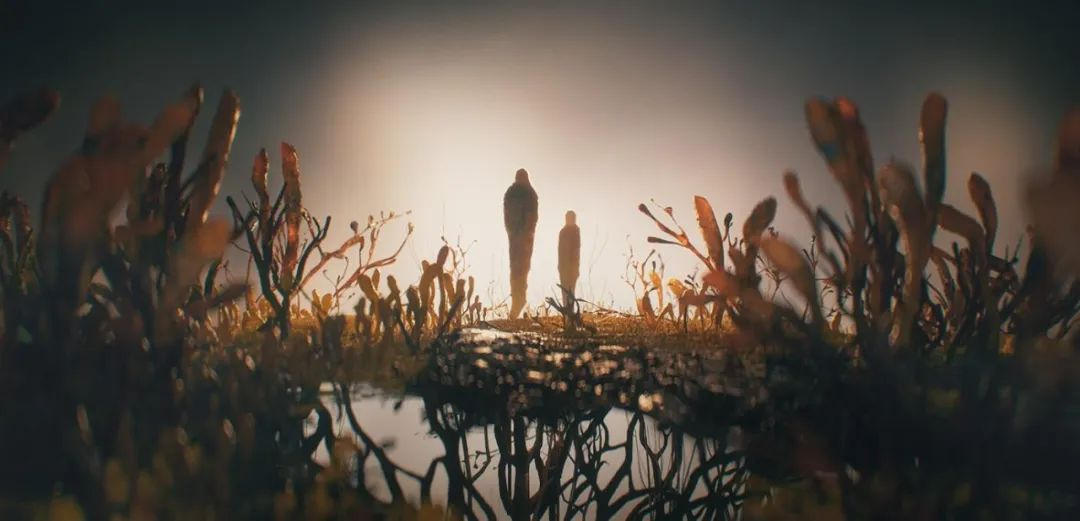
Sculpting ‘The Last of Us’ with Fungi, She Takes the Emmy Podium
The Last Of Us” title was laid out on a carpet of fungi at the end of a shimmering piece of music.
Last year was the year that game adaptations broke the mold.
The Super Mario Bros. Movie and the U.S. series The Last Man Standing both set new benchmarks for game adaptations in both movies and TV episodes this year.
And not long before The Last Survivor opened, HBO released an early animated opening sequence for the show. Word of mouth about the show has been festering since these opening credits.
The constantly changing shapes of the fungi are set to the classic guitar music of The Last Survivor, so whether you’re a veteran of the game or a new viewer who hasn’t been exposed to the original, you’ll be able to savor your own feelings on this post-apocalyptic journey across America.
Half a month ago, the Last Man Standing episode ended its journey to the “Oscars of Television”, the Emmy Awards, with eight awards. One of the awards, called “Best Title”, was given to the 3D animation.
Shimin, one of the creators, stepped into the spotlight to receive the trophy.
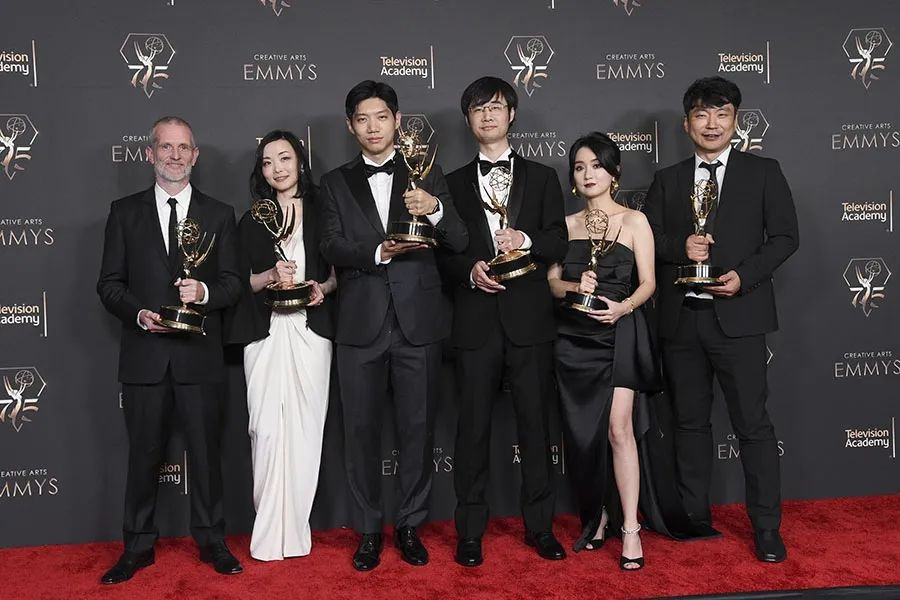
Before I talked to her, although I liked the animation, I knew nothing about its production process. I couldn’t even imagine that in the opening credits, a familiar yet unfamiliar presence to the audience, there has always been a group of creators who are seldom seen in the limelight, quietly constructing a small but complete “mystery industry”.
Sculpting Fungi
“A spectacle of visual illusions constructed by microscopic flora.”
These were the first words the director said to Shimin on the project “The Last Survivor”, and they were also the root of the entire team’s creation.
In the final finished credits, we can see the fungal mycelium that drove the entire story, growing at a rapid pace to the familiar sound of The Last Survivor’s guitars. It grows into a skyscraper shape in the sunlight, spreads flat into a map of the United States, manifests a human face, and grows into the familiar large and small figures of Joel and Ellie.
Finally, the carpet spreads out the title of “The Last Of Us” in the shuddering coda of the track.
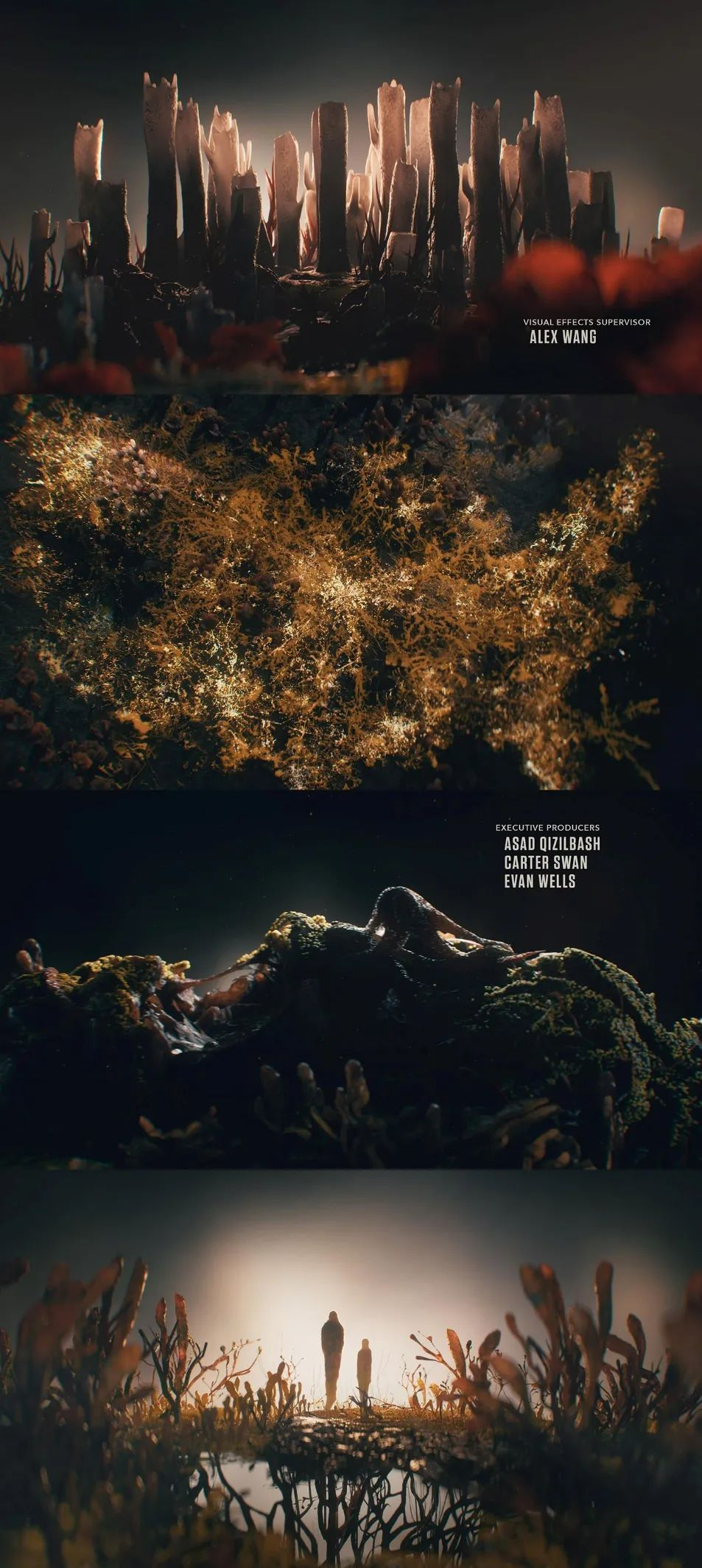
The one-minute-long title sequence was animated by a team of more than 20 people at Shimin’s company, Elastic. There were six creators: two directors, two designers and two animators. Min Shi took on the role of designer, and the other designer was Zeng Xiaolin from China.
After a meeting and communication between the two title directors, the storyboard subplots will be handed over to Shi Min, who will then sculpt the specific shape of the fungus, its growth dynamics, and the camera scheduling in the software according to the theme of the “visual spectacle of the fungus colony”, and then hand over to the animators to deepen and complete the digital assets into the finished title that we will see at the end of the film.
The visual fantasy of the fungus is the main tone of the title sequence after the two title directors communicated with the executive producer of the episode “The Last Survivor”.
One of the major challenges in front of Shi Min during the creative process was how to find a visual balance between abstraction and realism: not only do we need to make people recognize the image as a colony of fungus growing wildly, but we also need to draw a skyscraper or a Joel Ellie through the abstract form of the fungus; not only do we need a sense of microcosmology, but we also need to be able to become a metaphor for the storyline.
Andy, the director of the film, didn’t have a standardized answer for what she wanted to achieve in the end.
In order to help her find a sense of what she wanted, the director found hundreds of reference images, from different kinds of fungus colonies to various angles of the Los Angeles city skyline. However, this kind of fungus, which has two different types at the same time, doesn’t exist in the real world, so she still needed to find the one with the most “feeling” after trial and error.
The difficulty of combining these two things can be felt even when searching for them.
For The Last Survivor IP, the original game will undoubtedly help them get a better feel for the story.
Although Shimin had never played the game, she had heard of the game’s reputation, and whether it was through cloud clearance or watching her friends play, she still had a general understanding of its style. Moreover, besides her, the remaining members of the main cast were almost all hardcore fans of the original.
This heavy (cloud) player status will undoubtedly allow them to better reproduce the tone of the game. For example, the post-apocalyptic feel of this zombie flick rarely relies on the zombies, and the tense excitement of slaughtering the walking dead isn’t the emotional center of gravity.
It was this repeated tapping of tiny, almost invisible tentacles that led to the completion of the short title animation after a year of work. But like The Last Survivor game itself, the process of creating this title sequence is a special case in the industry.
The jungle of credits
In the cases that Shimin has come across, the production of credits is not always a slow and meticulous process that gives enough time and space.
In addition to “The Last Survivor”, Shi Min has also participated in the production of the opening or closing credits of “Pantheon”, “Captain Marvel”, “Mulan”, and many other episodic movies. Generally speaking, the episode credits, which are generally around 1 minute in length, will give them 3 to 4 months; the credits of a movie may go up to 2 minutes in length, and the duration will be longer accordingly.
Due to the unique nature of a title or credits sequence, its length is destined to be tied to a list of producers; the more people involved, the longer it will be. Marvel’s Spider-Man 2, which was released last year, has a five-minute-long passable post-credits animation, and 3A games tend to have quite a bit more major production staff than movies.

Last year’s HBO series had “The Last Survivor” among the highlights of the push, which is why the production of the title sequence began to move forward before the series began filming, leaving them a year to slowly hammer it out. And because of the attributes of this title sequence’s game adaptation, it also gives it a slightly special production process.
The importance of music in the credits cannot be overstated. Game of Thrones, Westworld, and many more of the most recognizable credits have music both in the background and as the main character.
In the eyes of viewers who have seen the show, this is a picture that comes with its own voice
Often, when Shimin and his colleagues start to conceptualize and produce the opening credits, the company’s editor will improvise a piece of music that he thinks fits the mood, and then start the production with the improvised soundtrack.
At the same time, the filmmaker will also look for or produce a piece of music to be used in the finished title sequence according to demand. Usually, it’s not until the end of the production that they receive the final music and adjust the details in the credits.
In the case of The Last Survivor, the guitar track that was chosen as the title track has long been familiar to gamers. At best, it’s a matter of Remix versus regular version, saving a lot of back and forth tweaking.
Different parties and different projects have different styles of feedback and revision. Shi Min faces the same kind of client as all other clients, some of whom are very specific in their requirements, such as whether a segment can be shortened by one second or a shot can be slowed down a bit, and so on; while some film makers only pursue a kind of “feeling”, and give them a lot of freedom to create, as long as the final product can satisfy them.
In the face of the market’s diverse and numerous requirements, the film series title production industry, although small, but in Hollywood today’s ten or so companies, has developed a different “school” that specializes in various niche areas.
Shi Min’s company Elastic, for example, they have produced “Game of Thrones”, “Westworld” and other well-known American drama credits, the most specialized in the realistic style of 3D animation. In the industry, some companies are good at stylized processing of live action footage, some always love to do some collage animation such as conceptual processing, and some companies like to do “3TOUCH2” style works.
Each company’s segmentation track is different, can meet the needs of different, although we have competition with each other, but still together harmoniously constitute a sects of the film head jianghu.
In this small ecosystem, Shimin has just won the Emmy Award, the industry’s highest honor. But if we look deeper, she is not the “direct lineage” of this martial arts forest. Most of the skills she utilizes in her work today are self-taught.
The best pen for the job
Technically speaking, Shi Min did come from an art school - the Beijing Film Academy - which doesn’t sound too far removed from her work today.
His undergraduate degree was in film art design, and his counterpart was an artist on a movie set. Shi Min was lucky enough to work with a Hong Kong team that was responsible for the art design of Infernal Affairs during her senior year. Following the experienced team, Shi Min learned a lot during her internship, and it also helped her understand the workflow of a movie artist.
But this kind of working environment, where she traveled all over the country and was in the midst of crowds, was contrary to her most comfortable creative state. In order to pursue an environment where she could “sit in a quiet space and create something with the utmost sincerity,” she decided to try something new after graduation.
So she traveled to the University of Southern California. There, her studies and creativity were very close to what she had expected. However, the school did not set any limits for them, and the 2D art-related courses taught in her major still made her feel a bit uncomfortable - she still had not found the pen she was best at and wanted.
By this time, Shi Min, having traveled from China to the United States, had already reached the age of 27, an age not far from the national age-anxiety threshold. Just as she was starting to worry about graduation and work, she saw the American TV show Westworld.
In the opening animation of this episode, the simple and powerful 3D models were given infinite deep meaning in the staccato and powerful piano music, and it was also the first time that Shimin saw the potential of 3D as a way of expression.
At a point in time when most people might think “it’s too late”, she began to search for tutorials and chew on tips on the Internet, and spent a year and a half getting started with 3D art and making her own short film for her graduation design. With this short film, she applied for an internship at Sony Pictures and got her foot in the door of the industry.
After she began to explore 3D art expression, Shimin often posted her work on social media. At first, she thought of it as a record of her creative process, a way to share her work, or a way to push herself, but she didn’t think much of it.
It’s only in hindsight that she realizes how important it is for a solo artist to post her work online, and how much publicity those random pieces of artwork she threw up on her own served as - she was able to get the job at Elastic, and later on the opening credits of The Last Survivor, because their director saw her posting on Instagram and saw that she was a part of the project. It was only because their director saw her personal work on Instagram that he reached out to her via private message.
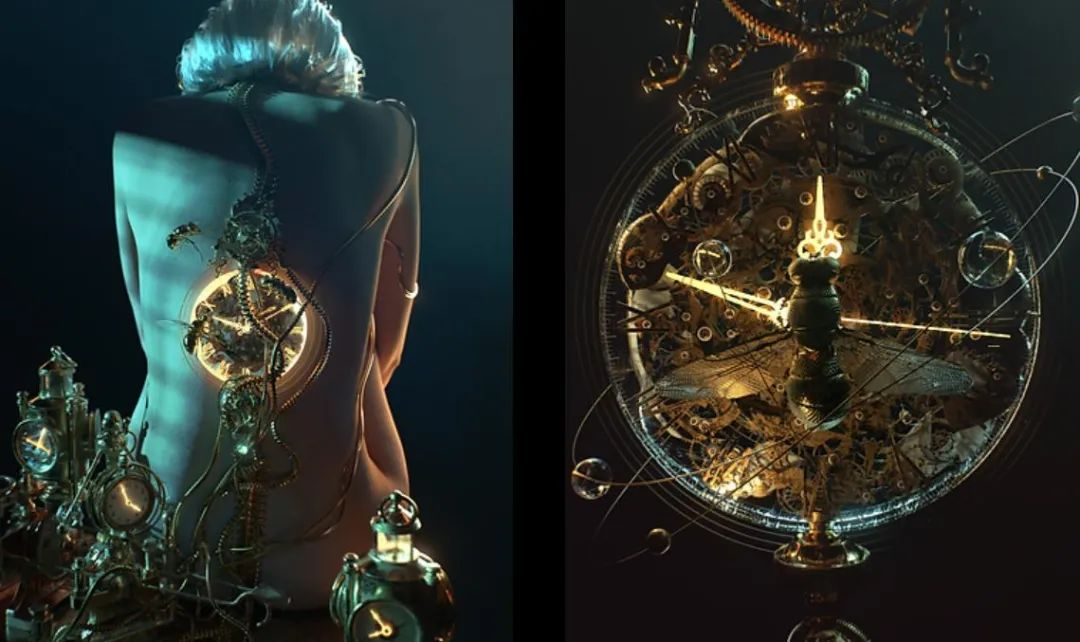

In these personal works, she also has no limits to what she can create, drawing inspiration from the best works in various fields. Her favorite director is Alejandro Jodorowsky (The Holy Mountain), which shows that she doesn’t set an “unacceptable” boundary for her work.
The Holy Mountain is a magical movie full of visual wonders.
She’s also looking forward to the opportunity to work in more diverse fields, such as gaming - in addition to The Last Man, Shimin also animated the TGA Awards.
After winning an Emmy, she’s looking forward to more opportunities like this - after all, for someone who started over with self-education, it’s too late to break the “too late” self-imposed limitations once, so that she won’t be stuck with them a second time.
Conclusion
Being able to stand on the Emmy podium was a fulfillment of a dream for Shi Min, as well as an exorcism.
Before and after the awards ceremony, Shi Min met many stars. Here everyone is just a representative of a specific type of work, without the filter and halo of the spotlight. Steven Yuan, who just won the Emmy Award for Best Actor for “Choke on Life,” was bumped into by her holding the Optical Actor trophy in one hand and pounding on a sandwich in the other, “exactly the same as Ang Lee’s famous scene where he chewed on a burger with a small Oscar in his hand.”
Some of the careers at the awards show may never have crossed paths in her years in the business, and some may not even have been heard of - just as we’re strangers to the title production industry. But the room still erupts in applause when they step into the spotlight to receive their honors.
And at the Emmys after-party, whether it’s producers, actors, directors, or martial arts directors, or some lesser-known behind-the-scenes laborer like her, everyone gathers on one dance floor.
Many of the guests took their shoes off and went barefoot for the ease of dancing. All the shoes were thrown together, no shade of skin color or rank, wantonly leaning against each other, gathered into a pile. Like a small mountain, it stood amidst the lights and music of the celebration.


